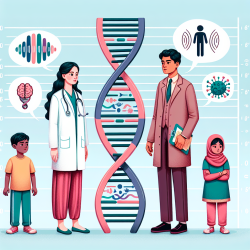Introduction
In recent years, the prevalence of adolescent depression has become a pressing concern for health systems worldwide. This mental health challenge not only affects the immediate well-being of adolescents but also has long-term implications on their social, academic, and professional lives. The research article titled "Development of a technology-based behavioral vaccine to prevent adolescent depression: A health system integration model" provides a comprehensive framework for addressing this issue through innovative, technology-driven interventions.
The CATCH-IT Program: A Technological Breakthrough
The CATCH-IT (Competent Adulthood Transition with Cognitive-behavioral, Humanistic and Interpersonal Training) program is a pioneering web-based intervention designed to prevent depression in adolescents. This program integrates cognitive-behavioral therapy (CBT), interpersonal psychotherapy (IPT), and motivational interviewing to create a holistic approach to mental health prevention.
Over a span of 14 years, CATCH-IT has undergone extensive research and development, including three clinical trials. The program targets adolescents aged 13-18, focusing on reducing risk factors and enhancing protective factors against depression.
Key Components of the Behavioral Vaccine Framework
- Life Course Schedule: The program is theory-driven and includes booster doses to reinforce learning and behavior change.
- Effective Components: CATCH-IT utilizes active components of information and training to equip adolescents with skills to handle future threats.
- Motivational Framework: The program employs motivational interviewing to enhance engagement and adherence.
- Structured Implementation Strategy: A well-defined strategy ensures the program's effectiveness within various health systems.
Implications for Practitioners
For practitioners looking to enhance their skills in adolescent mental health prevention, integrating technology-based interventions like CATCH-IT can be transformative. By understanding and applying the components of the behavioral vaccine framework, practitioners can offer more effective, accessible, and cost-efficient solutions to their patients.
Moreover, practitioners are encouraged to conduct further research and explore the integration of similar technology-based interventions in their practice. This proactive approach not only benefits individual patients but also contributes to the broader goal of reducing the incidence of adolescent depression on a systemic level.
Conclusion
The development of technology-based behavioral vaccines, such as CATCH-IT, represents a significant advancement in the prevention of adolescent depression. By leveraging the power of the internet and integrating it into primary care settings, we can create a more resilient and mentally healthy future generation.
To read the original research paper, please follow this link: Development of a technology-based behavioral vaccine to prevent adolescent depression: A health system integration model.










